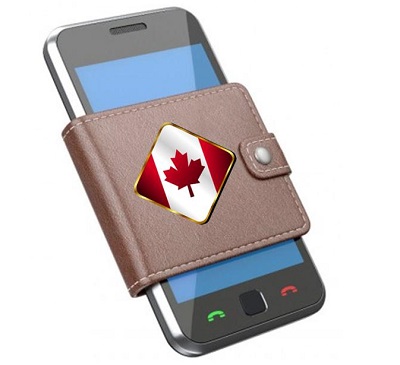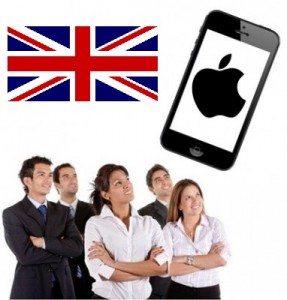New mobile payments apps are preparing for the launch of the iPhone’s own option.
As Apple Pay is now on its way to Canadian consumers, the UGO mobile wallet is getting itself ready to deal with a market that will have a much larger amount of stiff competition to face.
The mobile wallet was created by UGO Mobile Solutions LP, with the backing of two Canadian banks.
That mobile wallet was first launched in December, and has managed to accumulate 50,000 users since that time, but it is now facing a considerable threat as Apple Pay heads out of the United States and into some additional countries around the world. Users of UGO are able to complete mobile payments transactions through the credit cards that have been issued by either Toronto Dominion Bank or President’s Choice Financial. This allows users to pay for purchases by tapping their NFC enabled smartphones against wireless terminals installed at retail checkout counters. That app also supports the loyalty cards of those retailers.
Now, UGO and other mobile wallets are getting ready to have to contend with Apple Pay, a very large entry.
 UGO isn’t alone in facing the Apple mobile payments threat as it enters the Canadian space. Other local players such as Suretap – a mobile wallet created by Rogers Communications Inc, one of the largest wireless carriers in the country – is also finding itself preparing for the change in the competition.
UGO isn’t alone in facing the Apple mobile payments threat as it enters the Canadian space. Other local players such as Suretap – a mobile wallet created by Rogers Communications Inc, one of the largest wireless carriers in the country – is also finding itself preparing for the change in the competition.
Apple has already sent its mobile payments service into the United Kingdom and is going to take that service into a number of other countries, including Canada, before the end of the year. While many customers are interested in seeing their iPhone 6’s and 6 Plus’s in action at the checkout counter, it has yet to be known exactly how much interest there is in this market space among Canadians.
UGO is geared up to sign up as many active users as it can before the arrival of Apple Pay. Alec Morley, its chief executive officer, explained that the company is currently on track to serve 100,000 unique users by the end of the year, who will be using over 250,000 cards to pay for their purchases through this service.
Many are predicting that the service from the tech giant is what the industry needs to take off.
Apple’s next step for its mobile payments service was in the United Kingdom, where it launched on July 14, and now many people are wondering the same thing that was asked in the United States when it began there: will this make the tech mainstream?
Analysts believe that Apple has the power and technology to take this type of service to mainstream levels.
The Apple mobile payments service is available for users of the iPhone 6 standard model and its Plus model, as well as for Apple Watch users. Currently, there are over 250,000 different locations throughout the United Kingdom that offer these contactless payments so that money can be paid through a card that is linked to the service, without ever having to take out the piece of plastic. Furthermore, the iPad Mini 3 and the iPad Air 2 have been equipped with the ability to use the service to make in-app purchases.
There are approximately 3 million devices in the U.K. that are compatible with this mobile payments service.
 That statistic was according to Kantar Worldpanel ComTech. Its figures also showed that in all of December, 2014, in the U.K., there had been 46.1 million contactless smartphone based payments made. The consumer insights director of that firm, Imran Choudhary, explained that “The market wasn’t making enough noise but now Apple is on board that will all change,” adding that “They are the ones to tie it all together and with all the eligible devices it is only a matter of time before everyone gets on board.”
That statistic was according to Kantar Worldpanel ComTech. Its figures also showed that in all of December, 2014, in the U.K., there had been 46.1 million contactless smartphone based payments made. The consumer insights director of that firm, Imran Choudhary, explained that “The market wasn’t making enough noise but now Apple is on board that will all change,” adding that “They are the ones to tie it all together and with all the eligible devices it is only a matter of time before everyone gets on board.”
That said, many similar types of predictions were also made when Apple Pay was first launched in the United States. That service stepped into a market where there were already some massive players – such as Google Wallet and even Softcard, which shut down at the end of March, despite the involvement of three massive telecoms.
Many have been turning to Apple to launch several types of markets, including mobile payments and wearable technology, but only time will tell whether or not the tech giant has the sway that is required to make such as large change in the shopping habits of the majority of the population.
 UGO isn’t alone in facing the Apple mobile payments threat as it enters the Canadian space. Other local players such as Suretap – a mobile wallet created by Rogers Communications Inc, one of the largest wireless carriers in the country – is also finding itself preparing for the change in the competition.
UGO isn’t alone in facing the Apple mobile payments threat as it enters the Canadian space. Other local players such as Suretap – a mobile wallet created by Rogers Communications Inc, one of the largest wireless carriers in the country – is also finding itself preparing for the change in the competition.
 That statistic was according to Kantar Worldpanel ComTech. Its figures also showed that in all of December, 2014, in the U.K., there had been 46.1 million contactless smartphone based payments made. The consumer insights director of that firm, Imran Choudhary, explained that “The market wasn’t making enough noise but now Apple is on board that will all change,” adding that “They are the ones to tie it all together and with all the eligible devices it is only a matter of time before everyone gets on board.”
That statistic was according to Kantar Worldpanel ComTech. Its figures also showed that in all of December, 2014, in the U.K., there had been 46.1 million contactless smartphone based payments made. The consumer insights director of that firm, Imran Choudhary, explained that “The market wasn’t making enough noise but now Apple is on board that will all change,” adding that “They are the ones to tie it all together and with all the eligible devices it is only a matter of time before everyone gets on board.”